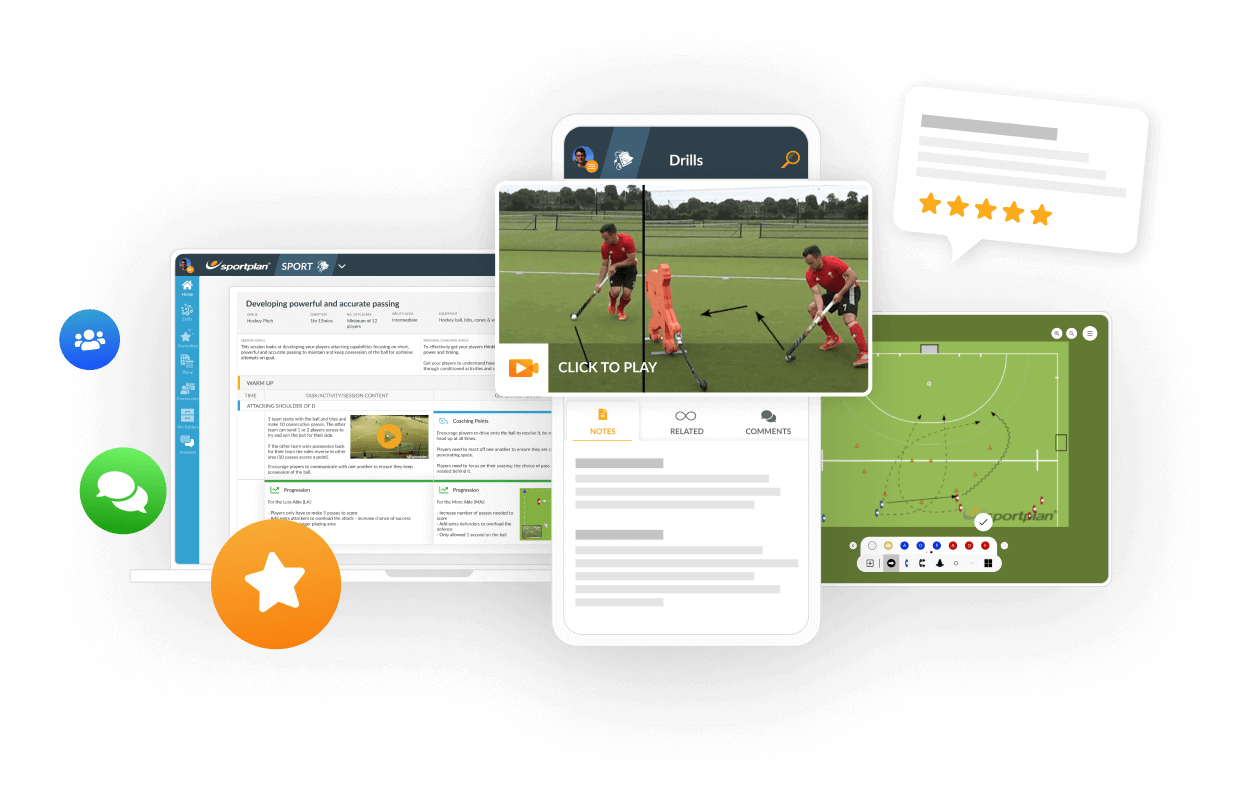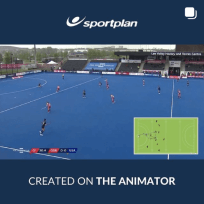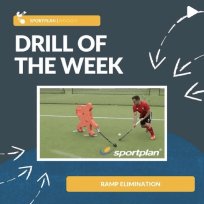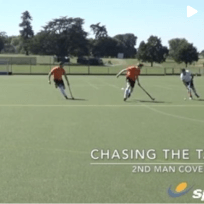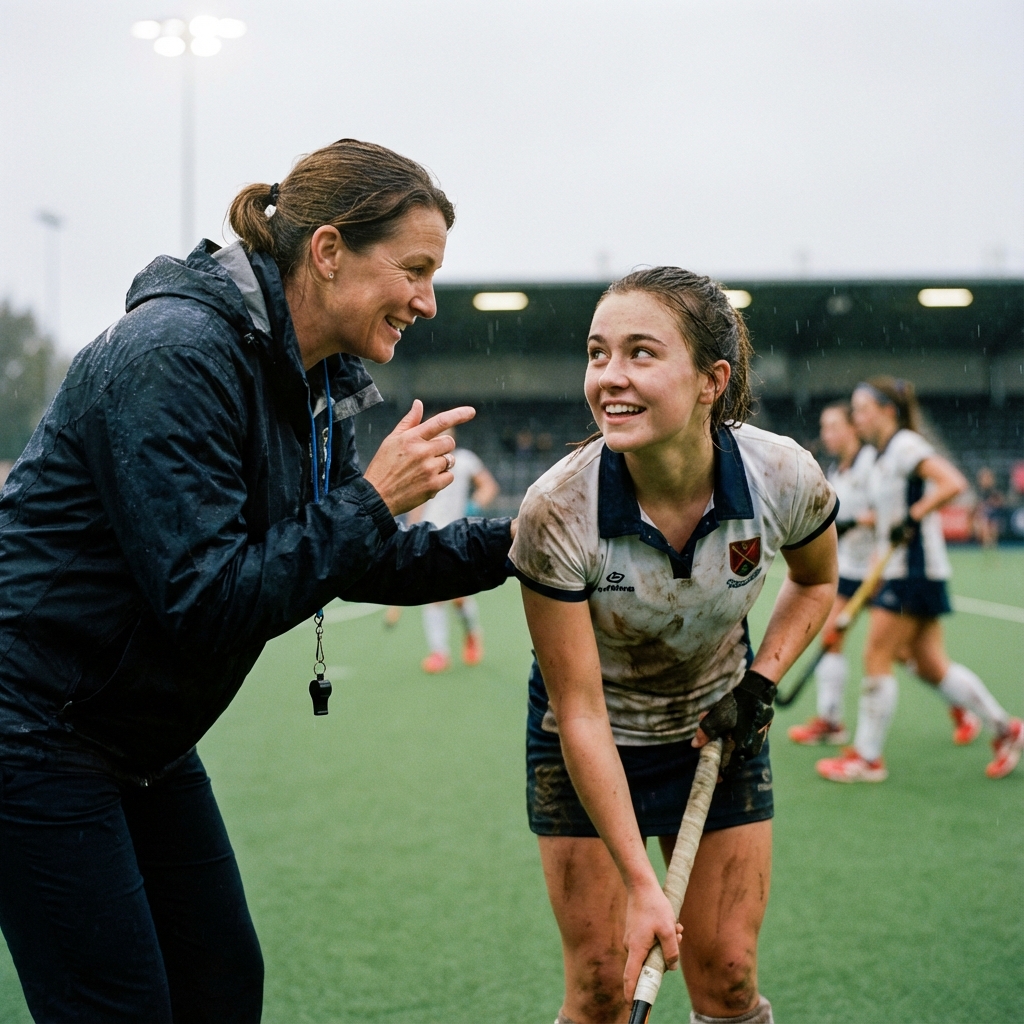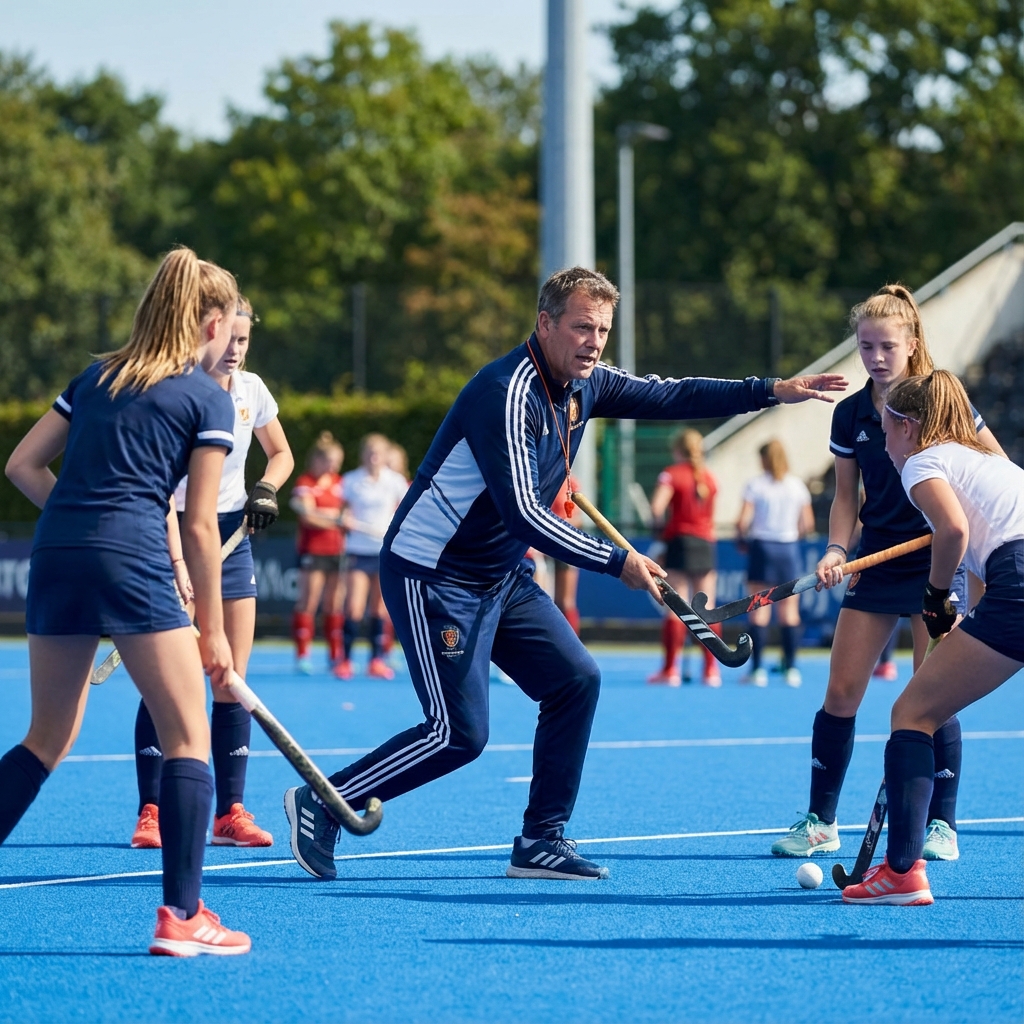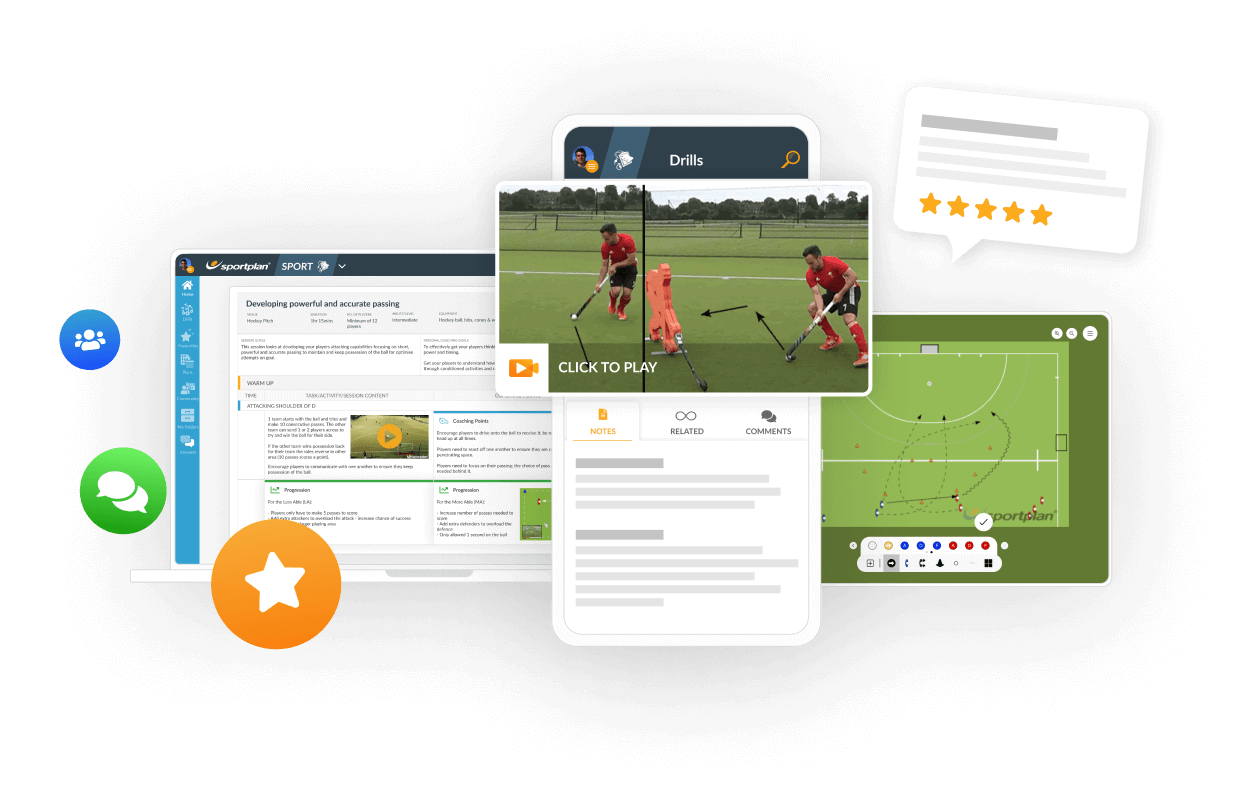Level 2 Practical Assessment - Help needed!
Hi all,I've got my level 2 assessment coming up on Sunday and I just wanted to quickly check whether there's a 'recommended' structure to the session plan.Btw, this is a level 2 practical assessment and is with juniors (U14s).One coach has suggested a 3 part approach:1) techniques and skills required2) unopposed 3) opposedThe theme I'm choosing, which is a bit of a generic one, is defending in a channel (as I'm a defender and it's pretty straight forward).I'm not really looking for info on what exactly to include (i.e. theme specific) but rather general structure or whether E.H. have an approved structure to sessions?My session's on Sunday, so a quick reply would be awesome.Thanks,Gary
Hi all.
Just to add. In an ideal situation, I'd prefer to work on team shape (there's been a great thread running on the matter recently), as my team needs to focus on that more than core skills in defending (although there's scope for improvement there too) lol
I know I need to choose a theme and settle on it... but just don't want to do something pretty well known to me... when there are other areas of the game that my team urgently need to improve on.
Equally well, it would be a bit of a risk to work on an area which is unfamiliar to me (in terms of teaching it) and literally be feeling my way through the session... although if I got through it, it would really demonstrate I can keep my head and teach stuff that is difficult.
Thanks,
Gary
Gary, I'll try to keep this brief.
Whilst it is fine to have a little closed skill work (unopposed around cones etc.) get it opposed as quickly as possible.
Why not find/devise a piece of Unit Play. Perhaps a 3v3 with players in realistic starting positions in an appropriate and relevant area of the pitch (right hand side in final third of the field).
Don't forget that there are technical issues relevant in this as well as tactical. Perhaps ball carrying position as well as getting ahead for example)
Get some sort of scoring mechanism built in to make it competitive and to maintain intensity. make it two dimensional (give the defending unit a points scoring opportunity)
Finish up with a SSG but make sure that the learning objectives for the session are intrinsic (e.g. give extra point for a get ahead if that is the mission critical learning point).
Everything will come from what it is that you want your players to develop. Keep that in mind and consider what actually happens in a match in this situation. Set up your content so that it replicates this situation but don't be afraid to build in some variability, perhaps by hitting in a secondary ball after the first phase has played out and players are in a different starting alignment. (This also adds a physical load to the session too!)
Hope it goes well.
hi Chris.
Fantastic response and so very much appreciated. Personally, I share your sentiments regarding unopposed play.
Cones are, as far as I'm concerned, just objects to aid direction and movement - it's amazing how you can completely change, for example, a technical circuit (e.g. which might have cones / a station for a V-drag) and put a semi active defender in!
You've definitely given me some food for thought.
Regards,
Gary
Hi Gary,
I concur with Chris's comments however depending on the ability level of your juniors unopposed play is useful to develop a skill, whereas opposed play can quickly lead to a breakdown in play and a breakdown in confidence. Perhaps start with 3v1 and work up to 3v3? But ultimately the assessor is looking at how you choose to run and, where necessary, adapt the session e.g. whole, part, whole or skill, drill, game etc. As far as I know there is no set structure they prefer. Good Luck!
Hi Alexandra
Thanks for the tips. Yeah... I've heard about the whole-part-whole vision before.
I get the concept but find it has limitations. For example, if you can't pass the ball because you can't pushpass, it's no good trying to play a game / get players active i.e. the "whole" breaks down virtually straight away. Of course the positive side to "whole" is presumably the more 'game-time' kids get, the more game sense they're potentially developing.
Having said all that, perhaps I'm misunderstanding the whole-part-whole regime?
Thanks again for the tips. Btw, I decided, mutually with my assessor, to postpone the assessment, so I had more time to prepare.
I ran a 'shape' exercise in the training session (which would have been my assessment), with 'interesting' results - had to run the conditioned game I'd chosen literally for about half an hour but at least saw some good, supporting play / off the ball movement occurring by the end.
I divided the playing area up into network of grids (with 1v1 in each box). I was playing 6 outfield players a side and had 9 boxes. I permitted movement into empty boxes, with the critical condition that only 1 player in each team could be in the same box at a given time. This forced players to space out, which was VERY good. THis also forced players to pass over greater distances, which I also felt was a very good idea.
Unfortunately, I'm not convinced, without some more testing, whether the structure of the mattch helped with positional discipline or not!
I think I should start with the same numbers of boxes as numbers in the sides, just to keep people localised... then progress onto having space to move into.
Very interesting though!
Cheers,
Gary
Hi Gary,
Your practical assessment should be a minimum 30 minutes excluding a warm up.
As an E.H. assessor your session must include skill, progression and game related play.
I would like to see an introduction to the skill, progression of the skill and game related play to highlight skill coached. Do not focuss on just the skill required for the session you are delivering you must not forget the basic core skills of the players (particularly Juniors)
i.e. ball and body position, ball near to the stick, head up-vision etc.
As an assessor I like to see your coaching style and how you drip feed the players of the skills and whether the session is too comfortable with the players or at 'match pace'.
i.e. how you coach a mixed ability group.
Q&A with the players during and after the session is important to show evidence that the players understand what is being coached and why it is coached (game related).
You will be questioned on anything the assessor does not see or needs clarifying after the practical assessment as part of the assessment process.
Do not forget to take your portfolio with you which should include evidence of attendance of a first aid and child protection courses, your Level one accrediation, four linked and two unlinked session plans and your coaching log.
Finally if you have a coach to help you, use him/her well, it will be noticed.
Good luck, be confident.
John Stolworthy
Ah John.
That's brilliant advice. Just the kind of thing I was after.
Thanks,
Gary
I think that there is still a place for some unnoposed shaping work, but I would still advocate having some element of decision making and some variability involved in that work even if this is very basic (i.e. ball arriving from different directions if working on receiving).
Remember that we are developing the ability to execute these skills in the match environment (pressure and variabiity in space/time/opposition etc.) and coaches need to recreate this environment in training.
Skills are not done in isolation and always follow some environmental cues. This coupling of perception & action is at the heart of our game and we need to develop skills with this in mind.
hi Chris.
Thanks very much for the continued input. I unfortunately shelved the assessment because both my tutor and I agreed I wasn`t ready, so have still to do the final practical assignments. Unfortunately, that also means I have to redo the ruddy internally mentored sessions too.
I`m pretty desperate to get it done/finished this season. Unfortunately, am also having a knee op, so am unsure as to when I`ll be able to actually complete the practicals.
Anyhooooo, down to what you were saying. If I follow you correctly, I would agree it`s very easy to sink into a drill and switch off due to the repetition, so, outside of progression, even moving drill from say left side of circle to right side, will demand different receiving techniques and hopefully challenge people AND keeping them concentrating.
In regarding to linking to a match environment, that`s why nearly all my sessions / drills have some kind of culmination in 1v1 or 2v1 or perhaps permitting a defender to counter-attack, just to have a game microcosm going on.
Regards,
Gary









